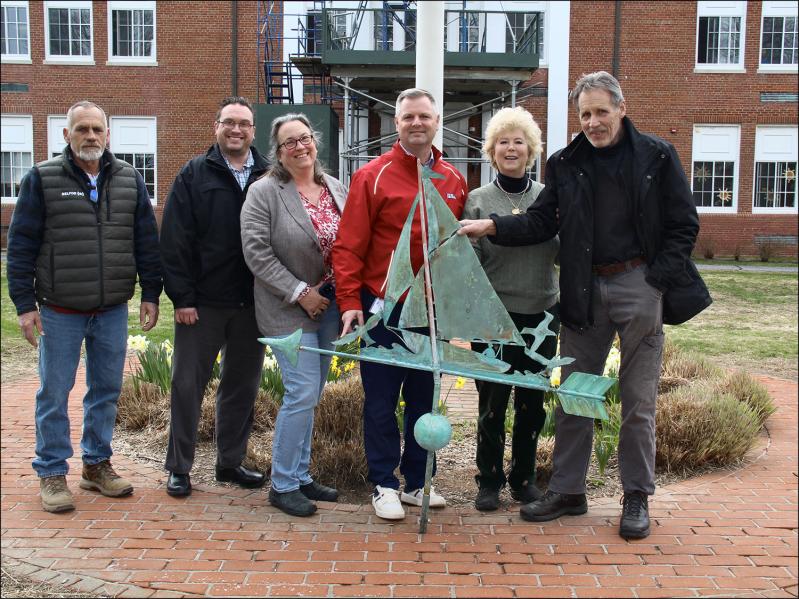When Superstorm Sandy roared across the South Fork on Oct. 29, 2012, leaving trees down all over the place and power outages lasting up to a week, it’s no wonder that it took a while before anyone noticed the damage to the distinctive weathervane atop the Amagansett School.
The vane, in the shape of a sailboat with sea gulls flying fore and aft, was added to the roof in 1936, a Depression year when similar red-brick schools were being built across the nation under Franklin Delano Roosevelt’s Works Progress Administration. So far as is known, it stayed put all those years until Sandy came along.
That’s not to say that anyone ever looked up to gauge the direction of the winds. “The arrowhead [the directional indicator] was out of balance,” said Bob Linker of the Irony, the East Hampton metalsmith recently tapped by the school board to restore the broken vane. “It was not engineered properly. I was told it never worked like a weather vane should.”
When Sandy hit, parts of the vane separated and fell. That was because “it wasn’t spinning,” Mr. Linker said. “The wind tossed it into the air and it fell into the bushes.”
“It slid onto the cupola atop the school building and ended up in the rear parking lot,” said Tom Mager, the school’s director of finance and operations, who was closing the building for spring break late Friday afternoon. He was told that the boat and the birds came down, leaving the arrowhead undamaged, though Mr. Linker disputed that.
“The boat and the birds were pretty much intact,” the metalsmith said, and he decided he could use those pieces. “The rest, I had to rebuild — the point [arrowhead], and it had no fin, so I added a fin to help it be more directional. I put lead shot in the point of the fin to balance it, otherwise it would be back-heavy.”
The shards had been stored since Sandy in the basement of the school building. “I got it in pieces,” Mr. Linker said. “Some of it just rotten, just pieces of metal I couldn’t use at all.”
The job took him two or three days. Using hammer, brass sheet, saber saw, turning lathe, and soldering torch, “I cut the salvageable parts into separate pieces of metal, mostly brass and bronze — no copper, no steel — and sketched how they wanted it to look, more like it had originally. I moved the sea gulls around so it was balanced.”
The finished product is “pretty aerodynamic,” he said. He’s not certain it would resist near-hurricane-force winds like Sandy’s, though he sounded optimistic.
Amagansett School officials “didn’t want it to look ‘shiny,’ “ Mr. Linker said. “They wanted it ‘old.’ So I put a green patina on the shiny brass.” (That old greenish look, he noted, can only be achieved on non-ferrous metal — brass, bronze, and, faster than anything else, copper.)
On Tuesday, scaffolding was still up out front of the school, but the weathervane had been installed. Gawkers may be disappointed, though. “From a distance, you’ll see the building with the weathervane on top, but you can’t get any detail at all,” said Mr. Linker.
In all the 76 years the old vane was upstanding, it never did what it was supposed to, he reflected. “I’m sure it never moved. It was just decorative.”
No more. Passers-by may not see the details, but at least now they’ll know which way the wind is blowing.

